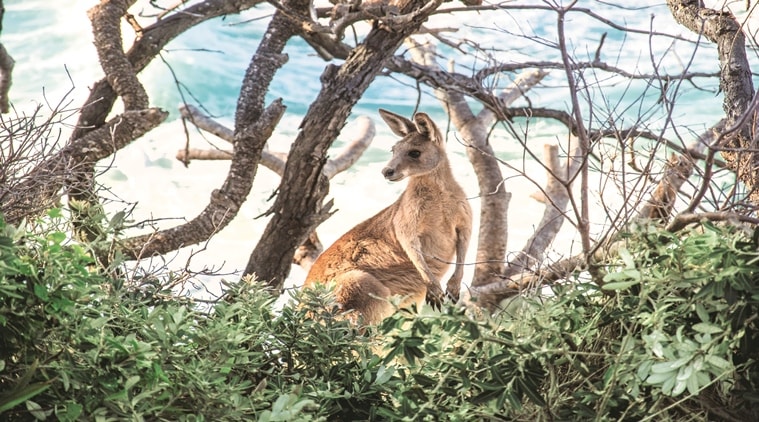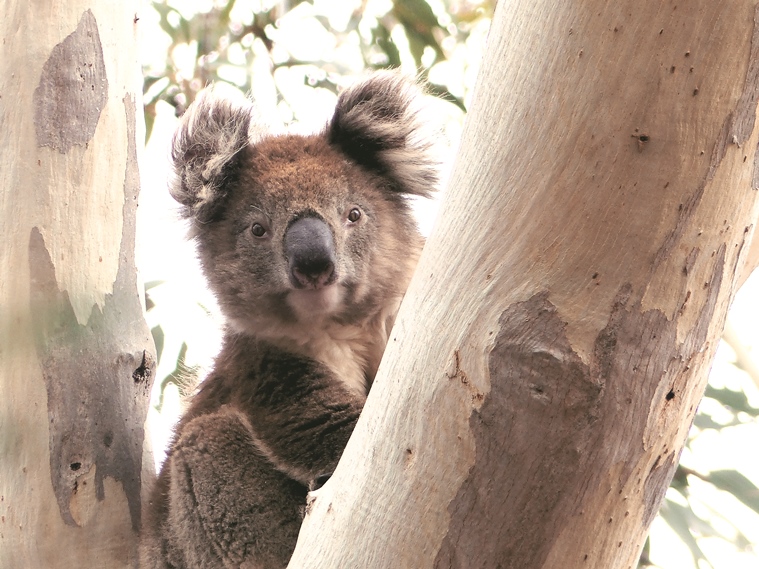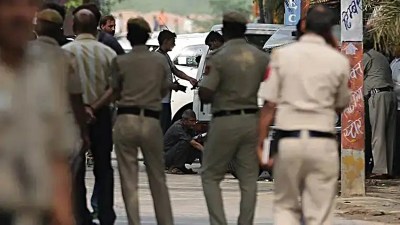Wild about Kangaroo Island
Don’t go to south Australia’s treasure island merely for the kangaroos. Its dramatic landscape is perfect for observing koalas, fur seals, sea lions, birds and even ants
 Shot taken of a wild kangaroo that I stumbled across whilst exploring Australia.
Shot taken of a wild kangaroo that I stumbled across whilst exploring Australia.
Squalls billowing into Adelaide airport from the southwest had delayed my flight, threatening to jeopardise my trip to Kangaroo Island. When take off we did, anxiety turned to panic. The Saab turboprop aircraft, on its gut-clenching 35-minute sortie to Kingscote over the Great Australian Bight, bobbed like a kite in a gale.
Kingscote was frigid and gusty but Ron Swan’s handshake reassured me. Everything about this short, stocky tour guide in his early sixties said “kindred soul”, and I was certain that my two-day sojourn would be filled with discoveries.
“You have to be grateful for this weather,” Ron said, jerking a thumb at the ominous skies as he announced that the ferries had been cancelled. Two large SeaLink ferries operate four times daily from Port Jervis, two hours south of Adelaide, bringing in enough tourists and cars to make the 4,405 sq km island feel a tad crowded.
Australia’s third largest island after Tasmania and Melville Island, Kangaroo Island has been cut off from the mainland since the sea swallowed the connecting land bridge thousands of years ago. Aboriginal people may have walked across it, as had emus, kangaroos and koalas. All but the kangaroos died out. Isolation kept the island out of reach of invasive foxes, rabbits and rats, which plagued the mainland. Much of the native vegetation was untouched.
The aboriginal people knew this southern land as Karta — Island of the Dead. It owes its modern name to Captain Matthew Flinders, the distinguished navigator and hydrologist who mapped the island assiduously in 1802. Flinders has a dozen or so places named after him in Terra Australis, as he described the land that Captain James Cook discovered for the British Crown in 1770. His legacy lives on in the picturesque Flinders Chase National Park, a refuge for diverse flora and fauna.
 Sea lion
Sea lion
The first wildlife we spotted was three hours dead. A brushtail possum, hit and run, swarmed by pearly-eyed Australian ravens. Roadkills showed up every other kilometre and Ron remarked that it was nearly impossible not to hit a possum at night. “On one drive, I counted 50 in half an hour and then I gave up counting,” he said.
As more dead animals materialised, I told Ron, “I want to see something alive!” Beside a dirt track cutting through dense mallee, Ron led me to a dry creek fringed by lofty red gum trees, then clicked his tongue and grimaced. “The Glossy Black Cockatoos aren’t here today but there, if you are interested, is a koala.” I looked up into a curious grey face with tufted ears blown back by the wind. Its left ear sported a red plastic tag. Therein hung a tale. After native koalas died out, a few were introduced on Kangaroo Island. The ensuing population explosion caused a scarcity of food, as koalas feed only on six species of wild eucalypt found here. Today, a humane control programme is underway, and sterilised koalas sport a coloured ear-tag. I was looking at one.
A profusion of parrots appeared. Crimson rosellas and rose-pink galahs squawked in the canopy. A flock of enormous yellow-tailed black cockatoos settled noisily. Ron held up a shred of honeycomb fallen from a tree. The Ligurian bee, now extinct in its native Italy, was introduced here in 1884 and went feral, to the delight of apiculturists. Bright yellow honeyeaters and silvereyes savoured nectar from clusters of flowering melaleuca, the hardy tea-tree. Beside the track grew prehistoric-looking grass trees that yielded yacca gum. A ten-foot high tree, crowned by a grassy mop of foliage, may be thousands of years old.
 Black swans
Black swans
“These yacca trees have survived the boom and the bust,” said Ron, referring to the alternating cycles of nature’s plenitude and penury that drove the unique evolutionary adaptations of Australia’s resilient flora and fauna. Kangaroo Island was recovering from a punishing summer and the first autumn rains had drawn the roos out of hiding to drink thirstily from highway puddles.
A stunning scarlet robin called on us as we lunched in the bush. Ron produced a bottle of local wine and grilled fillets of King George Whiting, a highly prized local fish. We ate, watched over by an inquisitive wallaby and a shameless but forgivably gorgeous superb fairywren that picked crumbs off my shoelaces.
Afterwards, Ron pulled up beside the road and pointed to what looked like a spiny rugby ball unsure of which direction to roll. This extraordinary creature was a short-beaked echidna, one of two primitive egg-laying mammals found in Australia. At my approach, the foraging echidna waddle-rolled back into the bush. “What was it eating?” I asked Ron. “Meat ants,” he replied. And then, his eyes widening, he exclaimed, “And now they’re eating you!”
Standing still for a second had invited the ants that survived the echidna’s lunch onto my shoes and shanks. They bit insistently through the fabric. Howling in pain, I stripped off my shoes, socks and the detachable legs of my nylon trousers while Ron thrashed them ferociously against a tree to shake off the tenacious ants. Passing motorists slowed down, marvelling at this vaudevillian diversion. I never quite recovered from the trauma — ghost ants crawled on my skin all afternoon.
It was not seals but Australian sea lions that welcomed me to Seal Bay, from where the ocean stretched unbroken for 6,000 km towards the Antarctic ice shelves. Later, I observed pods of long-nosed fur seals at Flinders Chase. Ron explained the difference — sea lions have coats of hair, rear flippers that can walk on land, and external ears. Seals, better adapted for aquatic life, have dense fur coats and no external ears. Their flippers are useless on land and they don’t venture far inland unlike sea lions, which can be seen three km from the beach.
 Koala
Koala
The western coast revealed a dramatic landscape. Gigantic granite boulders, streaked with mineral deposits and hollowed out by saline spray, form the Remarkable Rocks. The cavernous mouth of Admiral’s Arch, an arresting theatre of sea-carved rock, is highlighted by stalactites that dangle like teeth.
Next morning, as we drove north towards Penneshaw on the Dudley Peninsula, there was little trace of the winds hammering the southern coast. Ron showed me to the village of American River, a sea inlet erroneously named in 1803 by American sealers who had camped here. Birds abounded. Along with Cape Barren geese, Australian shelducks and musk ducks were little pied cormorants, masked plovers, Australian pelicans, two species of oystercatchers and white-faced herons. White-bellied sea eagles and wedge-tailed eagles circled in the sky.
En route to the airport to catch my flight back to Adelaide, I gazed morosely at the water. “Don’t put that camera away yet, mate,” Ron said. Out on the water swam two graceful black swans with eight cygnets. I clicked away gratefully. When I had finally packed away my camera, a flock of about 200 little corellas rose from a field near the airport. “Some things you don’t need a photograph to remember,” Ron said, as he pumped my hand in farewell.
Bijoy Venugopal is a travel writer and cartoonist



- 01
- 02
- 03
- 04
- 05
























